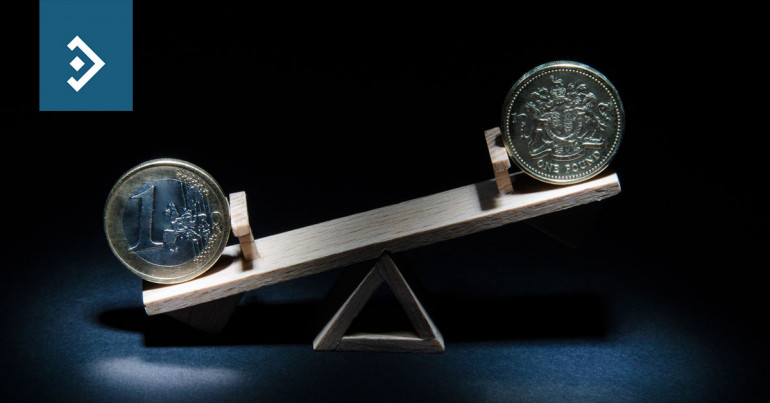
Central Bank in inflation mode
Morning mid-market rates – The majors
17th May: Highlights
- BoE to keep on Hiking despite recession threat
- Employment bubble close to end
- Outlook to continue to worsen into 2023
Recession likely to arrive while hikes continue
Tomorrow’s inflation data will confirm the trajectory of price rises towards 10% as the headline rises above 9%.
Data for employment will be released this morning with the claimant count expected to fall again but not by as much as has been seen recently.
Less than 40k workers will have come off the register, while last month it was closer to 50k.
While it is clear that the global economy is suffering post Coronavirus, with many countries in the grip of the virus, it is the UK that seems to be starting to suffer more than other G20 nations.
The reason for this is a combination of factors. Brexit regulations continue to affect exporters, especially to the European Union. While imports of raw materials and spare parts are slow to recover momentum.
Staff shortages and the pace of the cost-of-living crisis are both also dragging the economy lower.
Sterling is being driven lower by speculative sellers, expecting the Bank of England to be forced to either quit hiking or slow the rate considerably.
Also, those same speculators, while not believing that the Fed is more committed than the Bank of England, feel that the divergence between the two nations’ monetary policy will accelerate.
Yesterday, the pound traded in a narrow range as the selling pressure that has prevailed recently subsided. Although there are no underlying reasons to buy the pound, certainly against the dollar currently, the pace of the dollar’s gains is slowing.
Yesterday, the pound traded between 1.2296 and 1.2217, closing almost unchanged from at 1.2251.
Considering your next transfer? Log in to compare live quotes today.
Jobless to rise along with prices
The reason for such a bearish set of expectations is the fact that he expects a slowing economy to be accompanied by a moderate rise in unemployment, while inflation remains a factor.
Several prominent economists, including Barack Obama’s top adviser Larry Summers, believe that price pressures are beginning to fade. It must be that there is additional evidence, since it is unlikely that anyone would base such an assumption on one month’s data, where both consumer and producer prices were moderately lower.
Bernanke doesn’t necessarily link stagflation and a recession. He believes that despite a slowing economy and rising inflation the classic definition of a recession, two consecutive quarters of contraction, can be avoided.
The former Chairman called on the current one to remain robust in his support of the 2% inflation target.
Currently, the credibility of promises made relies more on the character of the promise-maker than it does on the exact words they use. That makes it vital to the credibility of Jerome Powell that he is resilient in bringing inflation back to 2%.
Powell has certainly adopted a 1990s vibe in monetary policy changes. Gone are the ten and twenty-five basis-point hikes in favour of the Grand Gesture of fifty at a time.
Powell won’t even wait to gauge the effect of the reduction of the Fed’s balance sheet before diving in with another fifty next month.
Recent data has pointed towards a slowing economy, but the FOMC, having decided to go for it by making inflation its target, will hope that a certain degree of equilibrium can be regained before thought turns back to supporting the economy and, in particular, employment.
Yesterday, the dollar index trod water around the 105 level It traded between 105.01 and 104.41, closing at 104.46.
ECB to celebrate Draghi anniversary with first hike
When the ECB announced the results of its policy review, and it changed its target for inflation from 2% to an average of 2% no one believed that the new, more relaxed posture would be needed immediately.
At that time with inflation at between 1.75% and 1.9% there were very few, other than the devout hawks, who saw inflation rising to its current level.
Now, with inflation not only not in the same ballpark as the target but not even in the same postcode, the time has come for action.
While the markets have been forced to accept that support for the economies most affected by the pandemic was vital, no one is convinced that it was really necessary to enter the second quarter with that support still in place.
It is generally agreed that the support should have been removed three months ago, with the move to positive rates being seen by the end of the current quarter.
The conflict in Ukraine has clearly muddied the waters as far as the cost of living is concerned. While Russia threatened the Ukrainian border for several months, it was still a surprise when the troops actually crossed into their neighbour’s territory.
Since then, there have been sanctions introduced with more to come and the wholesale energy price has risen again.
The Euro seems to be in more trouble than the pound, as confidence in the Union’s recovery is crumbling. Although Bernanke sees stagflation but no recession, it is likely that the Eurozone will see both.
The single currency is still predicted to hit parity, but there appears for now to be some buyers around the 1.04 level.
Were there to be any kind of dovish comment from Christine Lagarde, whose support for a hike appears fragile at best, the pace of the decline will accelerate.
Yesterday it fell to a low of 1.0349, it recovered to close at 1.0412.

About Alan Hill
Alan has been involved in the FX market for more than 25 years and brings a wealth of experience to his content. His knowledge has been gained while trading through some of the most volatile periods of recent history. His commentary relies on an understanding of past events and how they will affect future market performance.”



